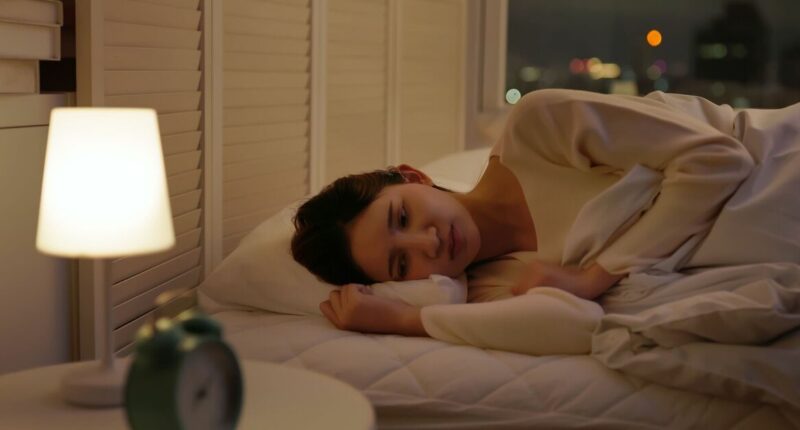Share this @internewscast.com
Drifting off to sleep can be a challenge for many. Often, our minds are buzzing with thoughts about tomorrow’s tasks or replaying awkward moments from years gone by, making it difficult to settle down for the night.
For some, achieving the perfect sleep environment is crucial. This might mean setting the bedroom to just the right temperature to avoid overheating or feeling too chilly, or ensuring that every light is extinguished to prevent any disruptive glows in the darkness.
If sleep still proves elusive, you might have resorted to so-called sleep hacks that promise to combat insomnia and have you snoozing in no time. These tips often involve simple in-bed exercises aimed at relaxing your muscles or mental distractions to slow down racing thoughts.
However, an intriguing suggestion has emerged from a neuroscientist on Instagram, offering a straightforward method to quickly fall asleep without needing to overhaul your mental processes or engage in pre-sleep exercises. The key, it turns out, may be as simple as placing something on your forehead.
Kyle Cox, who specializes in using neuroscience to address trauma, suggests that placing something cold on your forehead when going to bed can induce sleep almost instantly. While this might sound unconventional, Cox assures that this technique is endorsed by sleep clinics and can be more effective than sleeping pills for bringing on sleep.
He elaborates, “Researchers have found that the temperature of your forehead influences whether your brain remains active or begins to power down. Just a one-degree drop in your frontal lobe’s temperature can activate the brain’s sleep chemistry.”
“They tested this on people with terrible insomnia. They gave them cooling caps that only touched their foreheads, and most fell asleep faster than people taking Ambien [a brand of zolpidem, which is used for the short-term treatment of insomnia].
“The cold slows down all that mental chatter because your prefrontal cortex literally can’t run hot when it’s being cooled. A cold washcloth works, or even a bag of frozen peas wrapped in a thin towel. Put it on your forehead when you get into bed, leave it until it warms up, and your racing thoughts will slow down immediately.
“I’ve been using this for months, and it works better than melatonin.”
You must be careful when applying cold things to your head, as you can cause skin damage or trigger a “brain freeze” headache. Something cold should never be applied directly to the skin, and frozen items should always be wrapped in a towel or cloth. You should also limit the application to just 15 minutes at a time.
Commenters on Kyle’s video were thankful for the advice, with many saying they would be trying it for themselves as they often struggle to get to sleep at night.
One person said: “This explains why I sleep better in a cold room and warm blankets.”
Another added: “It’s 3:30 in the morning. I’m trying it now.”
A third wrote: “I instantly believe this! I only want the air conditioning on really cold, once the rest of me is snug in the warm bed. If I wake in the middle of the night, I put the air conditioning on a short super blast, and I fall straight back to sleep.”
How to treat insomnia at home
The NHS claims that insomnia usually gets better if you change your sleep habits. They suggest trying the following:
- Go to bed and wake up at the same time every day
- Relax at least 1 hour before bed, for example, take a bath or read a book
- Make sure your bedroom is dark and quiet – use curtains, blinds, an eye mask or earplugs if needed
- Exercise regularly during the day
- Make sure your mattress, pillows and covers are comfortable
They also state you should avoid the following:
- Do not smoke or drink alcohol, tea or coffee at least 6 hours before going to bed
- Do not eat a big meal late at night
- Do not exercise at least 4 hours before bed
- Do not watch television or use devices right before going to bed, because the blue light makes you more awake
- Do not nap during the day
- Do not drive when you feel sleepy
- Do not sleep in after a bad night’s sleep and stick to your regular sleeping hours instead















